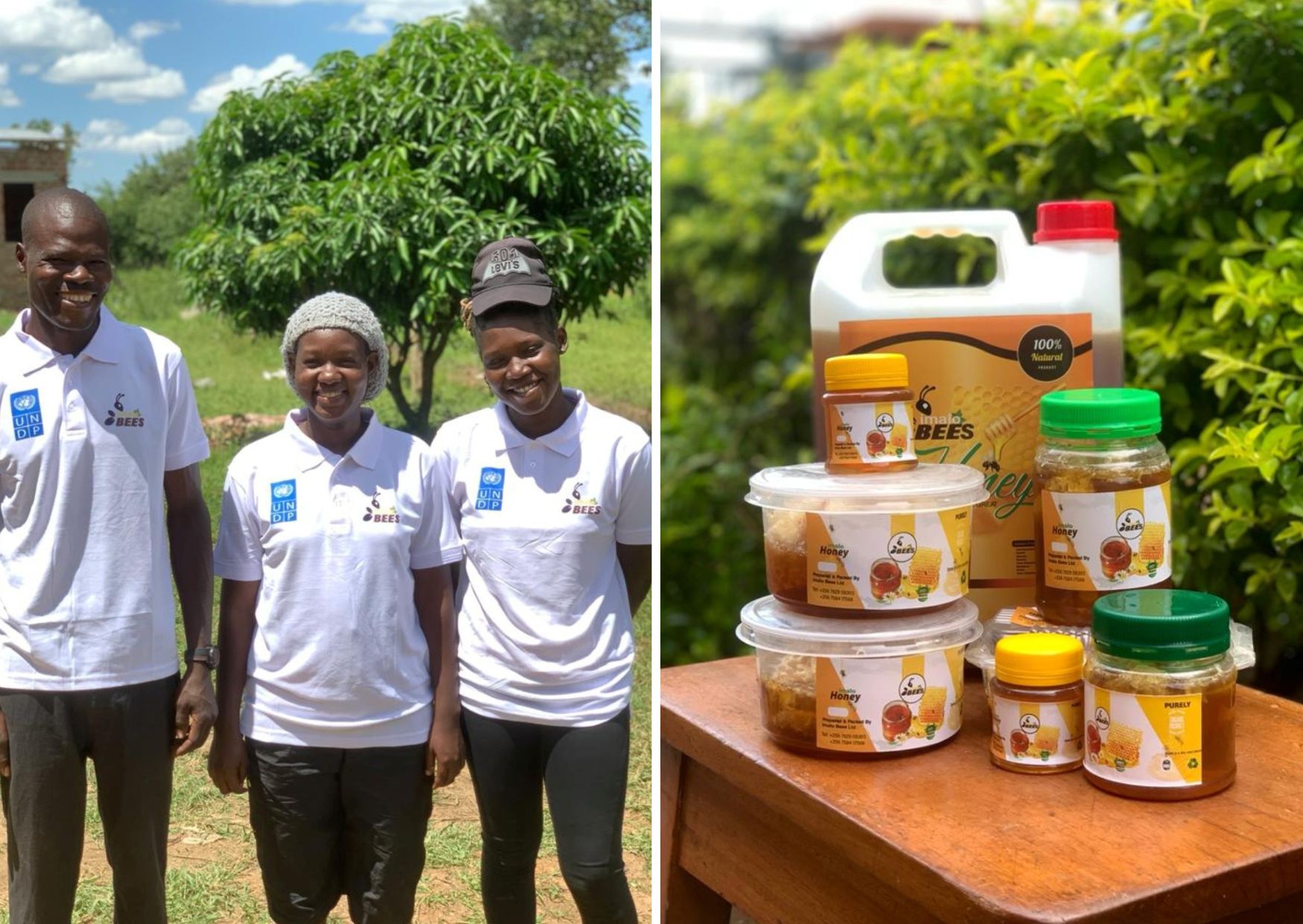Protecting bees to enhance Biodiversity Conservation
May 21, 2024

The East Bee Venom team and their honey products.
Despite significant enhancements in technology and innovation in recent years, we remain completely dependent on health ecosystems for water, food, medicines, clothing, fuel, shelter, energy and livelihoods. As such, conservation of biodiversity is considered a key component within the administration of natural assets and a driver of sustainable human development.
The role of pollinators - such as bees - and pollination is essential for ecosystems to thrive, and conservation of these ecosystems is central to maintaining biodiversity. Bees are essential pollinators as they move from flower to flower in search of nectar, inadvertently transferring pollen between different plant species. This cross-pollination promotes genetic diversity, crucial for the survival and evolution of many plant species. Therefore, bees can contribute to biodiversity conservation by supporting habitats and ecosystems.
According to the integrated assessment of partnership of the EU–ACP Economic Partnership Agreement on Uganda’s biodiversity, local communities have raised concern that bees are disappearing form commercial flower growing areas due to heavy use of agrochemical. Therefore, to promote biodiversity conservation through supporting ecological based agriculture, the United Nations Development Programme (UNDP) is supporting agro-business enterprise East Bee Venom. With support from UNDP, East Bee Venom has been able to establish an apiary with 25 bee colonies and train 27 young people on bee keeping practices

East Bee Venom training students at an agricultural show in Awoja, Uganda.
Bee venom contains powerful anti-inflammatory properties and that is why it has been used in treatment of arthritis, nerve pain, multiple sclerosis, swollen tendons, and muscle conditions. Bee venom also benefits the health of the skin and immune system.
The use of bee venom products to prevent and treat diseases is often referred to as apitherapy and based mainly on the experience of traditional systems of medical practice in diverse ethnic communities. Today, a large number of studies are focused on the antitumor effects of bee venom, which are mainly attributed to its basic polypeptide melittin (MEL). Previous studies have indicated that bee venom and its major constituent MEL cause a strong toxic effect on different cancer cells, while a less pronounced effect was observed in normal non-target cells. It is from this background that East Bee Venom saw an opportunity to venture in this business.
Unfortunately, bees continue to face threats due to human activities. These threats include habitat loss, intensive farming practices, changes in weather patterns, and the excessive use of agrochemicals such as pesticides. Air pollution also affects bees, interfering with their ability to forage efficiently.

Bee colonies within the East Bee Venom apiary.
On this International Day for Biological Diversity, it is pivotal for development actors to consider integrating solutions relating to conservation into agricultural extension services, develop and implement incentives for farmers and communities to protect pollinators and their habitats, promote access to data and decision-making support tools, promote education and public awareness of the value of pollinators and biodiversity, and ultimately reduce the threat to these species and their habitats.
By Mercy Melody Kayodi, Youth and Innovation Programme Officer

 Locations
Locations